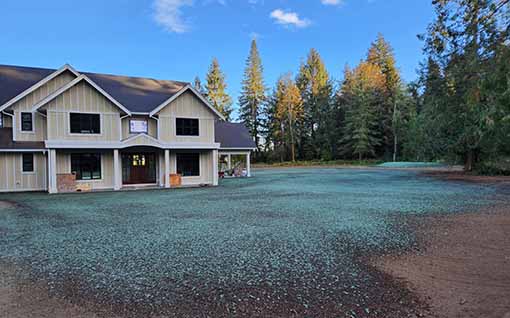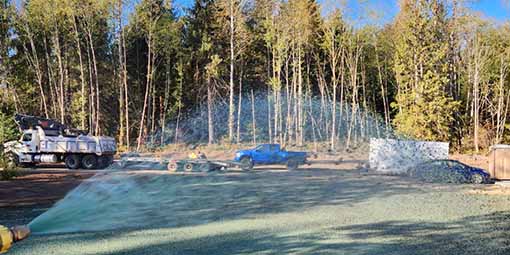Hydroseeding
What is hydroseeding?


-
Cost Effective
-
Rapid Growth
-
Land Reclamation
-
Soil Stabilization
-
Wildfire Rehabilitation
-
Landscape Design
-
Habitat Restoration
Benefits and Components of Hydroseeding
Hydroseeding involves a mixture of seeds, water, fertilizer, mulch, and optionally tackifiers and other additives. Seeds tailored to the landscaping project are combined with water, serving as a carrier for distribution.
Fertilizer supplies essential nutrients for germination and early growth, while mulch retains moisture and protects seeds from erosion. Tackifiers may be included to enhance adhesion to soil, particularly in challenging terrain.
Other additives, such as soil conditioners or growth enhancers, may also be incorporated to optimize soil health and plant development.
Contact Us
How long does it take for vegetation to establish after hydroseeding?
The time it takes for vegetation to fully establish after hydroseeding can vary depending on factors such as seed type, environmental conditions, and maintenance practices.
Typically, visible growth can be observed within 7 to 14 days, with full establishment occurring within 4 to 6 weeks under optimal conditions.
Is hydroseeding suitable for steep slopes or challenging terrain?
Yes, hydroseeding is an excellent choice for stabilizing steep slopes and challenging terrain prone to erosion. The slurry mixture adheres well to the soil surface, providing effective erosion control and promoting vegetation growth even in difficult-to-reach areas.
Can hydroseeding be customized for specific soil types or climates?
What type of maintenance is required after hydroseeding?
Proper maintenance is crucial for the success of a hydroseeding project. This typically includes regular watering to keep the soil moist, monitoring for weeds, and adjusting mowing practices as the vegetation grows. Our team will provide detailed maintenance guidelines to help you achieve the best possible outcomes.
